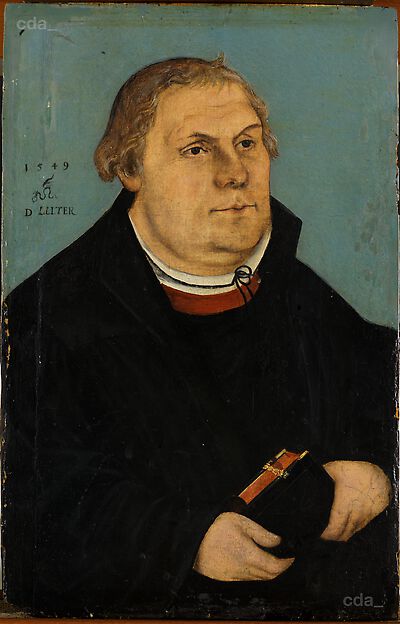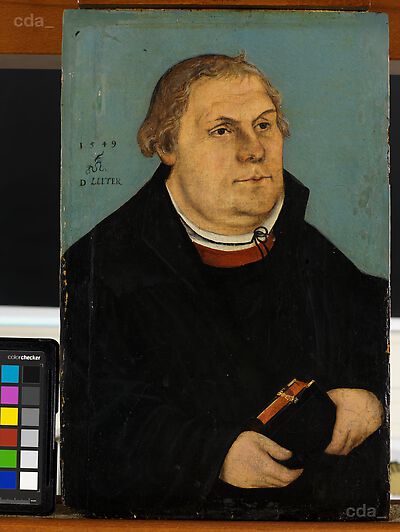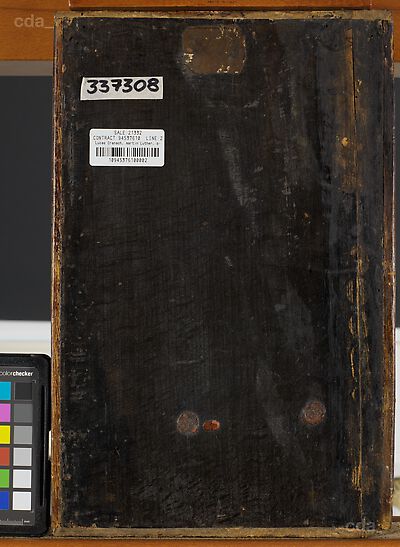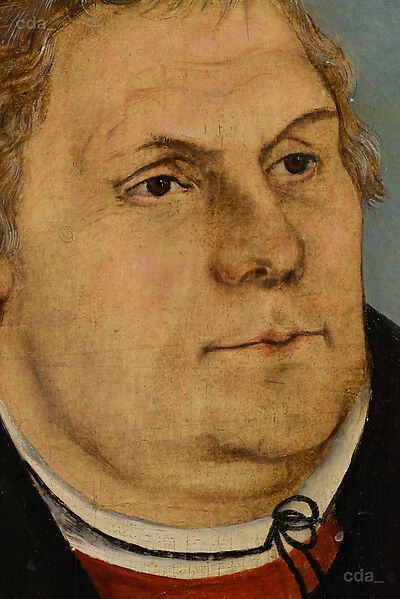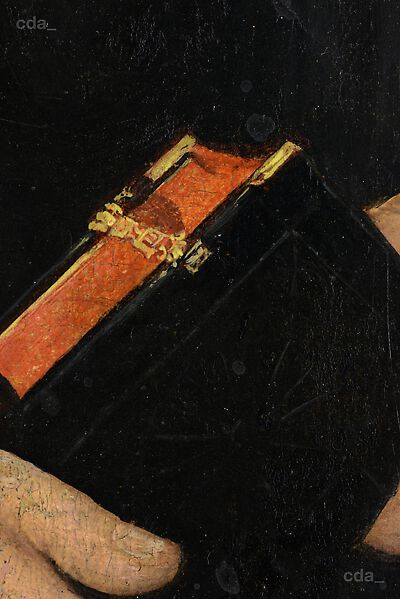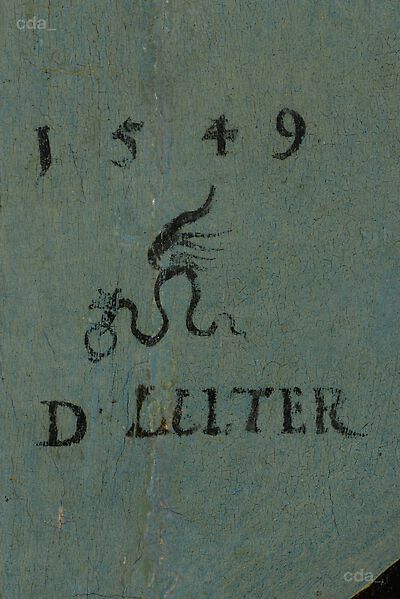Support
The wooden panel consisting of two planks of different widths (35.9 x 23.3 cm). It's made of hardwood, probably beech wood. There is a rebate on all four sides on the reverse; on two sides this was filled at some stage with wooden battens. The reverse exhibits original horizontal marks from a blockplane.
The support is a beech wood panel that corresponds with the standard format B. From the 1520s such panels were used frequently in the Cranach workshop.
Ground and Imprimatura
The ground is white. There is a barbe visible at the upper and lower edges.
Underdrawing
An underdrawing is not clearly visible using infrared reflectography. Examination under the stereomicroscope revealed red lines in numerous areas (e. g. above the top lip, along the hairline). These may have been executed with red chalk. Isolated black lines executed with a dry drawing implement are also visible along the hairline at the side.
On many paintings from the Cranach workshop an underdrawing has not been detected using infrared reflectography. Red underdrawing lines on the other hand like the ones found on this painting have been observed on other paintings from the Cranach workshop, particularly ones attributed to Lucas Cranach the Younger.
Paint Layers and Gilding
Using XRF analysis the elements contained within the paint were detected and by comparison with optical characteristics the following pigments could be identified: lead white, lead-tin-yellow, iron oxide, vermilion, azurite, smalt and carbon black.
The presence of calcium suggests that calcium carbonate (chalk) was used in the ground or as a bulking agent.
Cobalt was detected in the background and examination under the stereomicroscope revealed that it was applied in two layers. Smalt was probably used in the underpaint, and subsequently the final layer was applied using an admixture of azurite and lead white.
In the Jäger's laboratory red lead was also identified.
The background was applied in two layers (see above); the greyish underpaint was applied with a broad brush.
The modulation of the flesh paint was achieved by dabbing the paint on.
Individual forms are clearly defined and executed with little overlapping. Only minor corrections were made to the composition
The pigments identified here were in common use in European panel painting before 1750 and were also used in the Cranach workshop. However while Lucas Cranach the Elder usually employed azurite as a blue pigment his son Lucas Cranach the Younger preferred to use smalt.
The technique for applying paint (dabbing) corresponds with the general practice in the Cranach workshop. The forms and design elements are also found on other works from the Cranach workshop from the 1540s. However the execution of details in this work like the eyes and the hair as well as the application of the flesh paint differ from those found on verified works by Lucas Cranach the Elder.
[unpublished examination report, G. Heydenreich, 2015]
